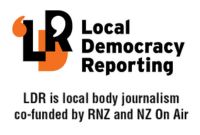Ashburton annual plan locked in

Ashburton District ratepayers will receive an average rate rise of 7.3% on July 1.
The 2025/26 Annual Plan was adopted by the Ashburton District Council on Wednesday [MAY 21] with a lower rate increase than the 10.1% signalled in the long-term plan.
Ashburton Mayor Neil Brown was happy with where the council had landed after a thorough process.
“We cut some things out. We’ve changed a few things around, but it’s still above inflation."
He said the external pressure on the budgets came from increases in insurance and electricity costs.
Councillor Tony Todd said the increase was lower than projected, “but still probably higher than most people would like”.
“We have been through the budget line by line, and I think we have come up with a reasonable result”.
The 7.3% average rate increase will vary for individual properties across the district, depending on their location, capital value and services they receive.
Councillor Richard Wilson pointed out the rural rates were “going up substantially”.
“Rural people can have the comfort that we are investing heavily in roading.
“There will be some push back on the rate increase but they are getting something for it, its not just being lost in the greater council budget.”
The council plans to spend $70.2m on operations, delivering and running services and $36.3m of capital expenditure, with the projected debt at the end of 2025/26 of $166m.
Chief executive Hamish Riach reminded councillors that in adopting the annual plan, “all the work in it is approved”.
“We don’t intend to come back to you and seek further approval on projects.”
The main changes from year two of the long-term plan include the removal of the planned upgrade to Robilliard Park (saving $251,500), a 5% increase to the drinking water rate (from $706.10 in 2024/25 to $741.50 in 2025/26), and using the Reserve Contributions Reserve to fund open spaces projects rather than loan funding.
The transport budget was adjusted to match the reduced NZ Transport Waka Kotahi funding, with the council retaining its $2.2m in the unsubsidised work budget.
In total, there is $18.7m to maintain and upgrade the roading and footpath network.
Separate from that is the council’s $4.9m contribution to the initial second bridge costs, with the full cost unknown until the tender process is completed later this year.
The plan includes $7.55 million for water main renewals, $3.6m for sewer main renewals and relinings.
In advance of green waste to be added to kerbside collection in 2026/27, the council plans to build a $564,000 consolidation bunker to temporarily store the collected waste before processing.
There is $1.2m in community grants, with $428,000 in contestable grants and $783,000 in non-contestable grants given directly to agencies like the Ashburton Trust Events Centre and Safer Mid Canterbury.
The plan includes $856,000 to develop a gravel car park on the former Polytech site, which includes the demolition of the buildings.
A reconfiguration of the Ashburton Domain playground will begin, with $338,000 of the work budgeted.
A business case will be developed for a district learning hub with a budget of $50,000.
Council fees and charges increase by 2.5%, except for food licence fees, which increase by 12% and animal control fees by 7%. Refuse and recycling fees, where the material is destined for Kate Valley, have been increased by 9.25% to align with the cost to the council.
Mayor Brown’s abandoned road cone fee - $10 per cone, with the “details to come later”- has also been added.
By Jonathan Leask

